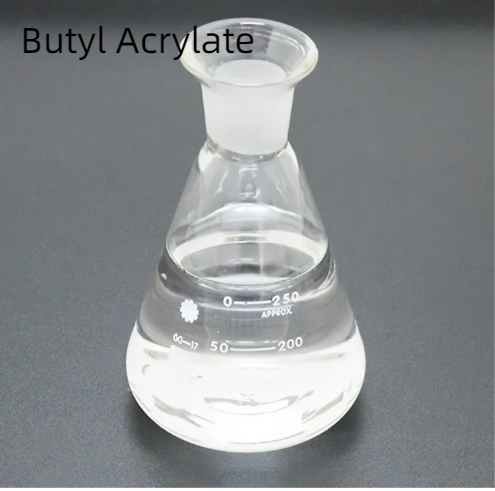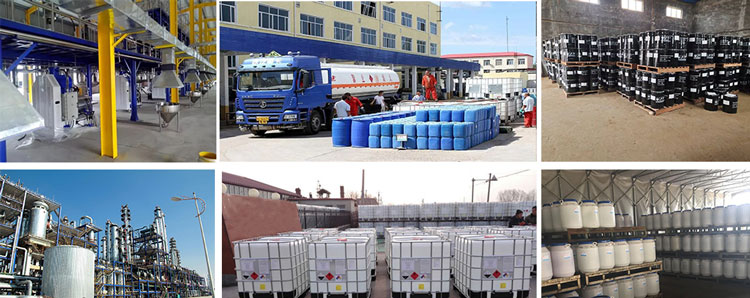Product Name: Butyl acrylate
CAS No.: 141-32-2
Appearance: Colorless liquid
Vapor Pressure: 3.3mm Hg ( 20 °c)
Steam Density: >1 (Vs Air)
Water Soluble: 1.4 G/L (20 ºC)
Refractive Index: N20/D 1.410(Lit.)
Explosive Limit Value: 1.1-7.8%(V)
Solubility:1.7g/L
Melting Point:-69 °c
Flash Point:63°f
Boiling Point:61-63°c60mm Hg(Lit.)
Hazard Class:3
Density:0.894
Assay: ≥99%
Product Name: Butyl acrylate
CAS No.: 141-32-2
Appearance: Colorless liquid
Assay: ≥99%
Main Characteristic of Butyl acrylate :
Butyl acrylate is Clear, colorless liquid with a characteristic fruity odor. Butyl acrylate is used in the production of
homopolymers and co-polymers such as acrylic acid and its salts, esters, amides, methacrylates, acrylonitrile, maleates,
vinyl acetate, vinyl chloride, vinylidene chloride, styrene, butadiene and unsaturated polyesters.

Technical Paramater of Butyl acrylate:
Characteristics | Specification | Analysis Result |
Appearance | Colorless transparent liquid | |
Purity, % | min 99.5% | 99.86% |
Pt-co color | max 10 (in bulk) | 10 |
Water Content, % wt | max 0.05 | 0.04 |
Free acidity % wt | max 0.01 | 0.01 |
MEHQ, PPM | 100±10 | 98 |
Production Workshop :

Quality Certificate
ISO9001:2008 -Quality Management System; SGS certification; FDA certification
Package & Storage of Butyl acrylate:
180 KG Drum, 14.4MT/20’FCL also be packed according to customer's needs.
Store closed containers in a cool, dry, well-ventilated area. Avoid exposure to direct sunlight.

Applications of Butyl acrylate:
1.In industry, acrylic acid and butanol are directly esterified under the catalysis of sulfuric acid. It is a monomer of
synthetic acrylic resin.
2. It is mainly used to prepare coatings, adhesives, resins and acrylic rubber.
3. Butyl acrylate is a soft monomer. It can be copolymerized with hard monomers such as methyl methacrylate, styrene,
acrylonitrile, vinyl acetate and functional monomers such as hydroxyethyl acrylate, hydroxyethyl methacrylate, glycidyl
glycidyl ester, acrylamide, etc. to form acrylate resins with different properties.
联系人:Michelle Zhang
手机:+86 19050308356
电话:+86 371 89812008
地址: 河南省郑州市高新区科学大道西悦城